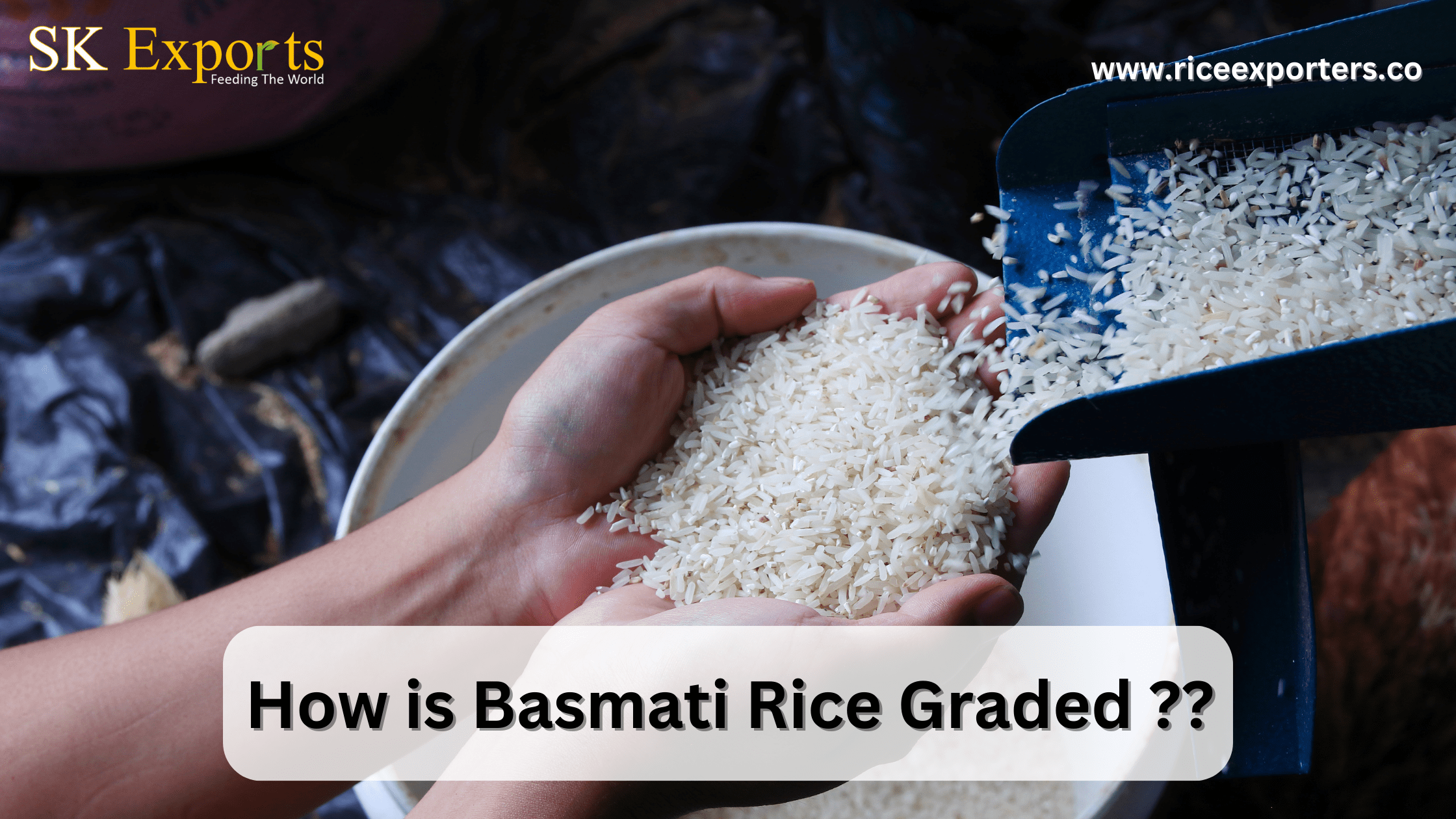Grading Basmati Rice: A Comprehensive Guide
Basmati rice, celebrated for its enchanting fragrance, long grains, and refined taste, stands as a globally cherished rice variety. The evaluation of Basmati rice is of utmost importance, given its wide-ranging quality. A meticulous grading process is imperative to ensure that consumers receive the premium product they anticipate. Grading Basmati rice is an intricate procedure that takes into account several factors, encompassing grain length, aroma, texture, and purity. In this comprehensive guide, we delve into the intricate process of grading Basmati rice.
Factors Influencing Basmati Rice Grading
Grading Basmati rice entails a systematic assessment of multiple attributes, each contributing to its overall quality. Here are the key factors that influence the grading of Basmati rice:
Grain Length
The cornerstone of Basmati rice grading is the length of its grains. Longer grains are typically deemed superior, a characteristic that is measured in millimeters. These graded categories are the foundation for labeling Basmati rice products, with “Super Basmati” being the highest grade and shorter grains falling into lower-grade categories.
Aroma
The hallmark of Basmati rice is its distinctive aroma, described as nutty or floral. This aroma arises from unique compounds present in Basmati rice. Graders evaluate the aroma’s intensity and character, with rice possessing a strong, pleasant aroma receiving higher grades. This fragrance is released when the rice is cooked, enhancing the overall dining experience.
Texture and Feel
Basmati rice must possess a delicate, non-sticky texture. Graders meticulously examine the cooked rice’s fluffiness, individual grain separation, and tenderness. The finest Basmati rice should yield grains that remain separate, light, and fluffy, making it the ideal choice for dishes like biryani or pulao.
Purity and Uniformity
Purity and uniformity are essential in grading Basmati rice. It should be free from impurities such as foreign particles, broken grains, or damaged kernels. Graders meticulously inspect the rice for contaminants and ensure uniformity in grain size and appearance. Uniform color and size are crucial indicators of quality.
Moisture Content
The moisture content of Basmati rice plays a pivotal role in quality and storage. Excess moisture can lead to mold growth, while insufficient moisture can cause the rice to become brittle. Graders employ precise instruments to measure the moisture content and ensure it falls within the optimal range for Basmati rice.
Whiteness and Luster
The whiteness and luster of Basmati rice are attributed to the milling process, which removes the outer bran layers. Graders evaluate the rice’s brightness, shine, and overall appearance. Premium Basmati rice should possess a bright, pearly appearance.
Taste Test
A taste test is often conducted to evaluate the flavor and overall taste profile of Basmati rice. This is typically done by cooking a small batch of rice and assessing its taste attributes, including sweetness, nuttiness, and mouthfeel.
Origin and Variety
The region in which Basmati rice is grown can significantly influence its flavor, aroma, and overall characteristics. Different Basmati rice varieties are cultivated in various regions of India and neighboring countries. Grading may also consider the rice’s specific origin and variety.
Quality Certification
For rice to be officially graded as Basmati, it must meet the standards set by relevant agricultural authorities or organizations. In India, for instance, the Agricultural and Processed Food Products Export Development Authority (APEDA) provides certification for authentic Basmati rice.
In conclusion, the grading of Basmati rice is a comprehensive process that considers multiple factors, from grain length and aroma to texture, purity, and moisture content. This meticulous grading ensures that consumers can confidently purchase Basmati rice of the desired quality, whether they are preparing a special dish at home or savoring it at a restaurant. Understanding the grading process empowers both producers and consumers to appreciate the exquisite qualities of this cherished rice variety.
What are the factors considered when grading Basmati rice?
Factors in Basmati Rice Grading
Grading Basmati rice involves assessing critical factors that determine its quality:
1. Grain Length: Longer grains are preferred, with “Super Basmati” being the highest grade.
2. Aroma: The distinct nutty or floral aroma is a marker of high-quality Basmati rice.
3. Texture and Separation: It should have a delicate, non-sticky texture, separating well when cooked.
4. Purity and Uniformity: Basmati rice must be free from impurities and exhibit uniform grain size and appearance.
5. Moisture Content: Proper moisture levels are crucial for storage and quality.
6. Whiteness and Luster: Brightness and a pearly appearance are desirable.
7. Taste: A taste test assesses flavor attributes like sweetness and nuttiness.
8. Origin and Variety: The region and variety influence flavor and aroma.
9. Quality Certification: Adherence to standards set by certification bodies ensures authenticity.
In summary, grading Basmati rice considers grain length, aroma, texture, purity, moisture, appearance, taste, origin, and certification to ensure consumers receive high-quality Basmati rice. Understanding these factors empowers both producers and consumers to appreciate this cherished rice variety.
Why is rice grading important for export?
The Significance of Rice Grading in Export
Rice grading is a pivotal step in rice export with several key advantages:
- Quality Assurance: Grading assures that only high-quality rice is exported, instilling confidence in buyers.
- Regulatory Compliance: It helps meet import standards, preventing rejections and facilitating trade.
- Price Benefits: Well-graded rice often commands better prices, benefiting both farmers and exporters.
- Consumer Satisfaction: It ensures consumer expectations for appearance, taste, and cooking qualities are met.
- Market Expansion: Accessing new markets relies on meeting grading and quality standards.
- Risk Reduction: Grading minimizes the risk of costly product recalls.
- Competitive Edge: Exporters offering consistently graded rice gain a competitive advantage.
In sum, rice grading is integral for export success. It assures quality, regulatory compliance, and consumer satisfaction while providing a competitive edge in global markets.
